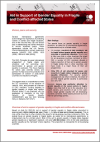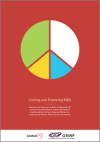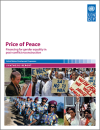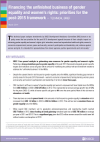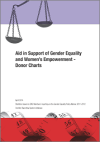FOUND 12
The present study is a contribution to mark the 10th anniversary of the adoption of UNSCR 1325, and provides an overview of DAC members' funding targeted to gender equality in fragile and conflict-affected states.
Examining the resources needed to implement Security Council Resolution 1325 at national level as well as the gains, gaps and glitches of financing the women peace and security agenda. Over the last decade the policy environment on women, peace and security has gained significant momentum.
The main research question of this study To what extent do post-conflict reconstruction initiatives allocate resources to promote gender equality, address women's needs and involve women in decision-making around strategies and related resource allocations?
Paper discussing the definition and measurement of Sustainable Development Goal (SDG) Indicator 5.c.1. (reclassified to Tier II) and comparing Indicator 5.c.1 with other SDG fiscal indicators.
This note provides an overview of existing gender equality markers and reviews issues relating to the tracking and monitoring of investments related to gender equality and women’s empowerment.
This technical paper analyses investments by OECD Development Assistance Committee (DAC) donors in six policy areas that are priorities for the post-2015 development agenda because of their catalytic impact on achieving gender equality and women’s rights: girls’ education; sexual and reproductive he
The guidance note sets out commom principles and standards for gender equality markers systems that track and report on allocations and expenditures for gender equality and women's empowerment.
The Global Programme Increasing Accountability in Financing for Gender Equality’ was developed to increase financing for national gender equality commitments in sixteen countries and to strengthen government and donor accountability on financing decisions and practices.
The ITC/ILO gender marker is a one-digit code (on a 0 to 3 scale) used by ITC to assess ;whether or not ITC/ILO ;training activities are designed in a gender-sensitive way in order to address the needs of women and men as ultimate beneficiaries of development actions.The application of the marker i
This report draws on the ten indicators including global indicator on gender equality of the Global Partnership monitoring framework. This report provides a first global snapshot of the state of play in implementing selected Busan commitments. In the midp
